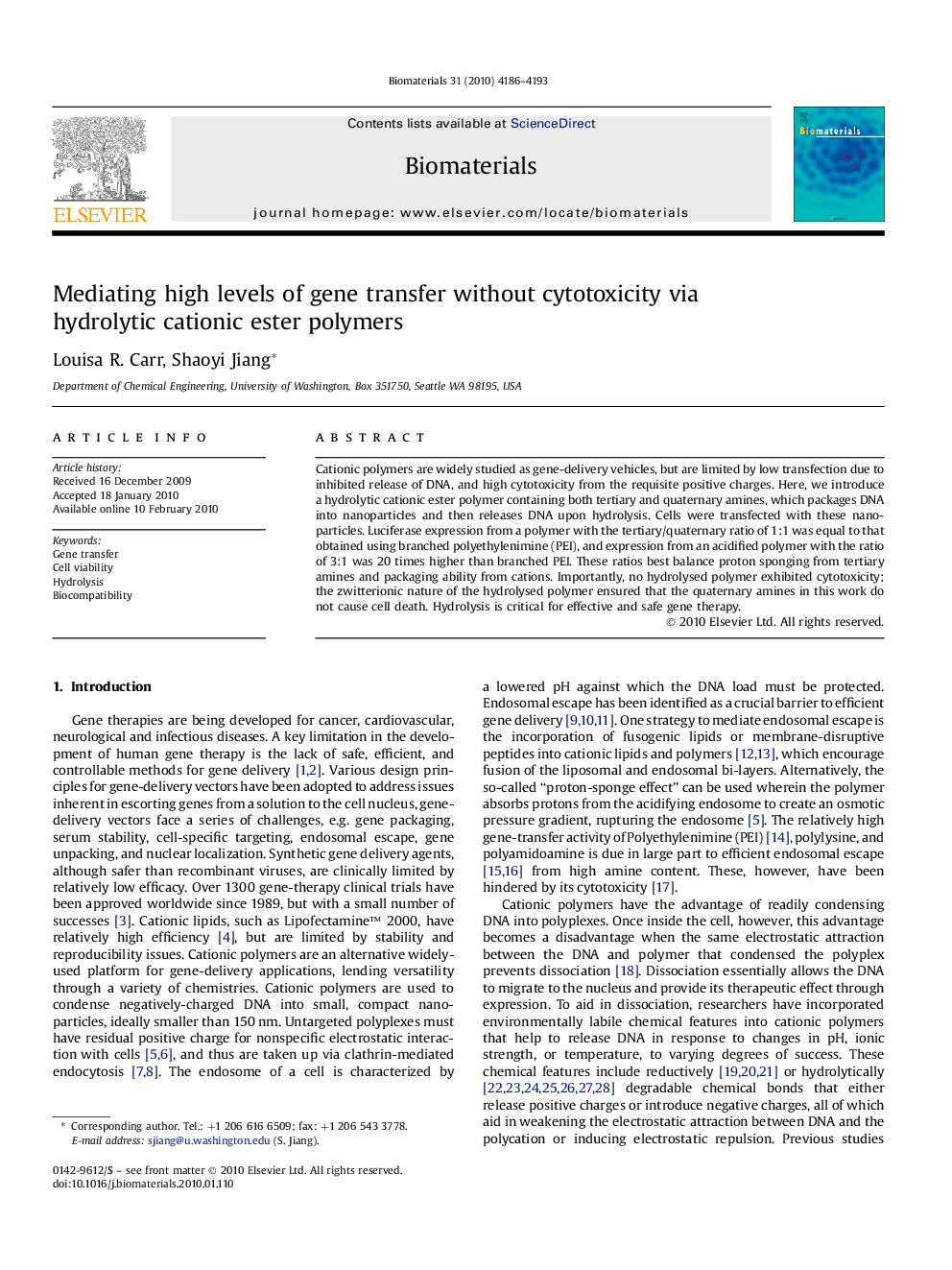| Article ID | Journal | Published Year | Pages | File Type |
|---|---|---|---|---|
| 9127 | Biomaterials | 2010 | 8 Pages |
Cationic polymers are widely studied as gene-delivery vehicles, but are limited by low transfection due to inhibited release of DNA, and high cytotoxicity from the requisite positive charges. Here, we introduce a hydrolytic cationic ester polymer containing both tertiary and quaternary amines, which packages DNA into nanoparticles and then releases DNA upon hydrolysis. Cells were transfected with these nanoparticles. Luciferase expression from a polymer with the tertiary/quaternary ratio of 1:1 was equal to that obtained using branched polyethylenimine (PEI), and expression from an acidified polymer with the ratio of 3:1 was 20 times higher than branched PEI. These ratios best balance proton sponging from tertiary amines and packaging ability from cations. Importantly, no hydrolysed polymer exhibited cytotoxicity; the zwitterionic nature of the hydrolysed polymer ensured that the quaternary amines in this work do not cause cell death. Hydrolysis is critical for effective and safe gene therapy.
